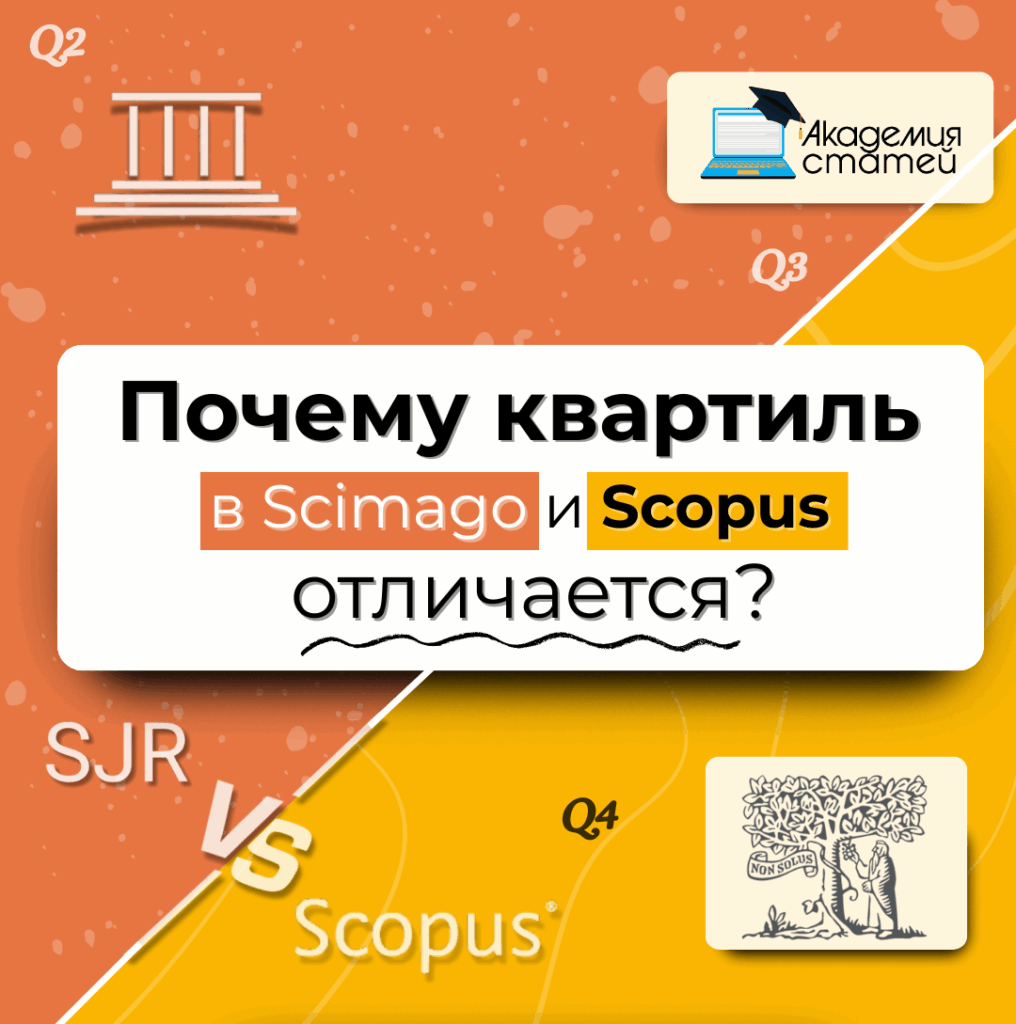The Hirsch index is used in the scientific community as a measure of publication activity—for publications by faculty, researchers, graduate students, and authors. The Hirsch index (citation rate) allows one to accurately determine the level of preparation of an academic applicant. This can also help select a more productive candidate for a position.
Although the h-index has long been used as a method for effective selection and evaluation, and its relevance is beyond doubt, debate continues within the academic community regarding its scope of application. And, even more so, the best way to achieve high scores and ensure promotions for publications.
To learn how to use this method, you need to understand its essence and operating principles, as well as the factors that influence the h-index, citations, and its improvement.
What is the Hirsch method and why should it be increased?
Publications, editions, page count, overall activity, and citations are traditional metrics that clearly demonstrate a propensity for research and the ability to present high-quality results. Since the significance of the research itself is virtually impossible to quantify, Argentine-American physicist Jorge Hirsch took on the challenge of quantitative analysis as an indicator of the work of scientific authors.
In 2005, he published his work "An Index for Quantifying Scientific Research Results," in which he outlined a groundbreaking development. It was later named the "Hirsch index" (the h-index method), which influences citations in the form of page links.
The scientist proposed a new, weighted indicator as a way to measure and compare the work density of "colleagues in the field," namely, physicists. The "h-index," or citation rate of publications, according to his work, is determined based on the publication activity and citation frequency of the entire list of publications.
Formula for calculating the h-index (Hirsch index):
The scientist has an index h, If h from his/her Np articles are cited at least h once each, while the remaining (Np — h) articles are cited no more than h once each.
This means that if a scientist has published, for example, 50 articles, each with at least two citations, then the h-index is 2. A similar h-index would be obtained for a scientist who has published two articles, each with 50 citations. However, this is an exaggerated example. In practice, more complex components are measured.
Thus, in the case of publishing dozens or hundreds of articles with varying citation rates, the number of articles whose serial numbers do not exceed the number of references is taken into account. Articles are then ranked in the order in which the number of referenced publications is lowest.
The h-index has been recognized as a scientometric indicator, recommended for measuring the productivity and citations of not only individual scientists but also entire communities, organizations, schools, projects, groups, and even countries. An increase in the h-index signifies an increase in status.
With the advent of the Hirsch index, a measurement tool, the scientific community has become increasingly concerned with increasing its value. Consequently, citing a list of publications by page references is crucial, as each scientist's performance evaluation depends on them. The Hirsch index, as a convenient indicator, can be a decisive argument when selecting a candidate for a position or participation in an important project. It can also be used to analyze the scope of a scientist's work and the degree of their influence on the development of their chosen field of study. This method allows for the creation of ratings that cannot be contested. However, their improvement is possible, along with the h-index and other indicators.
Effective ways to increase the h-index in scientific papers
In Hirsch's interpretation of the concept, it's not enough to simply conduct research and validate it by presenting high-quality results in a "publication." Now it's necessary to create a product of sorts that will be in demand within the scientific community and trigger further citations. This evidence comes from citations to the work added to other scientists' articles, or from the "h-index" method.
Thus, over the past nearly two decades, a new method of presenting material to the public has emerged in the scientific field: marketing tools. Their purpose is to increase demand for an article as a "scientific product" and its citation. The more often a colleague's original source text is consulted, the more relevant and valuable a given research is in the eyes of the scientific community.
To avoid being relegated to the margins of the academic world—as an unpopular author and misunderstood researcher—despite intense publication and scientific activity, it's essential to work on improving the citation rates of your articles and texts in general. This will improve your h-index and other metrics. In practice, this method is quite amenable not only to analysis but also to regulation.
Is this possible? The answer to this question is not only affirmative, but also suggests using several effective methods to significantly increase the h-index and boost citations. Just trying one of them will make the success of your articles evident in this improvised academic marketplace.
Method 1. Improving the quality of scientific research
Pure scientific creativity and the publication that goes with it are a uniquely creative process. Its outcome is not only the Hirsch index and citations, but also developments, proposals, recommendations, discoveries, the identification of patterns, and the rationale for refining accepted academic formulations—everything that possesses properties essential to science.
This method presupposes scientific novelty, as its increased presence is a key indicator of the significance of a multi-page work. It is this novelty that becomes the key factor in recognizing a researcher as worthy of an academic degree upon dissertation defense.
Research papers containing scientific novelty are clearly structured and divided into distinct sections. This same structure is adopted by articles submitted to journals. This is a generally accepted method for presenting a scientist's achievements in a standardized format and influences the h-index method, as well as other metrics.
The quality of a publication and its improvement depend, first and foremost, on the precise presentation of the material on every page. A scientific, concise style and strict adherence to the meaning of the terms used make the high-quality work clear to fellow scientists from every page. At the same time, a consistent presentation, supporting arguments with facts, and presenting the essence in an engaging, yet non-populist, manner make the material truly interesting and worthy of attention. This improves not only the h-index but also other important indicators.
On the contrary, an abundance of empty phrases ("fluff"), inappropriate epithets, repetitions, vague meaning, and outright inconsistency between sections and even entire pages of text diminish its quality and devalue the work itself. This method of popularizing science is a waste of time.
Method 2. Publishing an article: following the rules
On the one hand, the rules of text creation are always followed. On the other hand, academic writing is quite formalized, so authors sometimes become overly enthusiastic about embellishing entire pages of text and gradually veer toward journalistic writing. Increasing the text's citation count page by page becomes problematic in this case. A different method, or a way to qualitatively improve the text, is required, where attention to detail on each page is crucial.
To avoid being one of these authors, your article's content must be carefully proofread to ensure it complies with the required structure. This also affects the h-index and its improvement. It's also important to eliminate unnecessary wording that weighs down entire pages of text. It should be easy to read, but not distract the reader from the central idea.
Basic requirements for scientific texts:
- Well-structured text on each page will be quickly indexed by search engines on the global web. It will be "noticed" by the Hirsch index and similar metrics. This requires keyword placement. The popularity of keywords and their combinations is demonstrated by openly available tools for analyzing user search statistics on the internet. This is a way to identify keywords that are essential for the content and will benefit any publication.
- An abstract, preferably in two languages, is essential. This is typically a summary of the article, conveying its essence. A well-written abstract will draw readers who are genuinely interested in the content and will be confident in the material published within its pages. This means increased citation rates and a higher h-index.
- Citations with links to pages in relevant sources. Some areas require regular updates. Revised viewpoints and the emergence of the latest, promptly published factual data automatically "age" a previous publication. Therefore, the dynamics of this factor must be constantly monitored and improved by proofreading every page.
- The formatting of the reference list is just as important as the article's structure—introduction, relevance, presentation of its key findings (the main text, the "body" of the article), and conclusions. The reference list serves as confirmation of borrowings and clearly demonstrates the author's ability to select sources. A relevant list is one of the criteria by which relevance is judged.
A properly formatted article serves as a role model and enhances the h-index, along with other metrics. This makes it a citable resource. An article should be valuable in both its content and presentation to its readers, which is what drives its citation rate.
Method 3. Writing articles in English
Despite its scale, the Russian-language segment of scientific writing still lags behind English-language scientometric databases and sources in terms of volume. Articles in English have a greater chance of being included in relevant foreign journals and boosting the author's h-index. This can also impact other metrics.
English-language articles are read not only in English-speaking countries; the increasing prevalence of the language has made it a global leader in knowledge transfer. A well-written, structured, and formatted article submitted to a journal listed in one of the scientometric databases guarantees a significant increase in citation impact.
Method 4. Scientific journal and publication: the right choice
The quality of the publication database plays a significant role. Consider the journal's indexation in databases, the frequency of online mentions, the print edition's circulation, and the absence of any complaints, the increase of which would leak online.
A journal with a solid reputation as a serious scientific publication and high esteem within the academic community is typically included in national and international databases. It's recommended to pay attention to the composition of the journal's editorial board. Leading scientists with well-known names add credibility to the journal, which means increased interest in the articles published. After all, they also act as reviewers and have their own h-index.
A journal that positions itself as a venue for casual online conferences or publishes all submissions for a fee is, by definition, unable to increase citation rates. Its primary means of achieving its goals is to increase the number of accepted articles, with little regard for their quality. Such a journal lacks any organized selection, peer review, or even proofreading as a working method. Consequently, publications will be of low quality.
Avoiding being misled means being careful about the platform where you intend to present your research.
Method 5. Additional features
Authors whose time is entirely devoted to science have no opportunity to find a method that guarantees an increase in the h-index and other indicators.
A viable and completely legal method involves posting links to articles in exchange for similar citations. Within a single field or specialization, this ensures increased dissemination of knowledge in the field. This mutual exchange, as a proven method, reduces the time spent searching for articles by other authors, which must be cited in any case. Otherwise, your own research risks being labeled as undeveloped in terms of its theoretical foundation and existing relevant results. And no journal will publish such an article.
Under COVID-19 restrictions, scientific meetings have also begun to utilize the remote format as a working method. Some conferences are being held remotely, but this does not necessarily negatively impact the h-index or citation rates. These events retain their significance as they remain included in the list of peer-reviewed publications of the Higher Attestation Commission (HAC). They also almost always publish their own journal. If a conference or journal is removed from the list, this should be taken into account.
Participating in high-profile virtual conferences and publishing their results carries no reputational risks. It even simplifies the process of presenting your product to the public. There's no need to waste time and money on travel and accommodation in another region. This method is one of the most effective and accessible.
Today, authors have the opportunity to free up their time and energy for pure science, without having to track their own h-value or worry about citations. The index method is still considered a fundamental metric for evaluating the performance of scientists, especially those just starting out, who desperately need this boost. Academy will help you implement one or more of the methods presented.
Within the required timeframe, citations to publications will appear in relevant journals with the desired results, which will immediately be reflected in the h-index. Achieving mathematically calculated parameters is always a matter of technique. By contacting the Academy, you can address one of the challenges—compliance with technical requirements, one of which is the h-index, or "big h-index" method. While a low citation rate doesn't necessarily mean a development is useless, the nature of scientific creativity requires original results, and their assimilation by the scientific community takes time.





